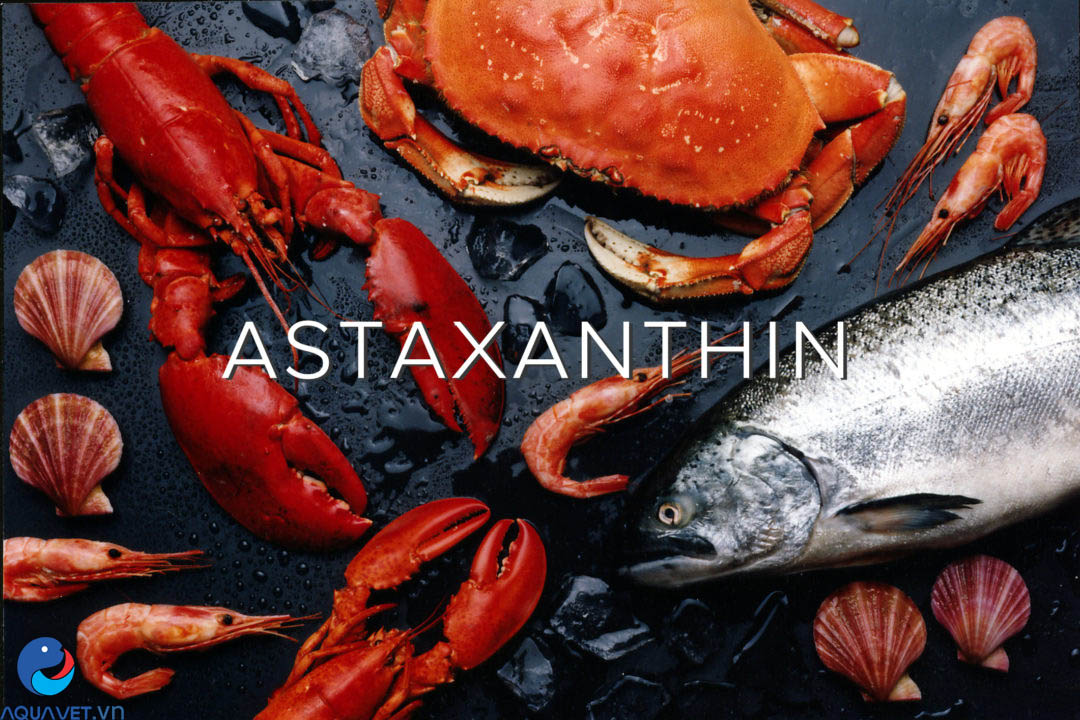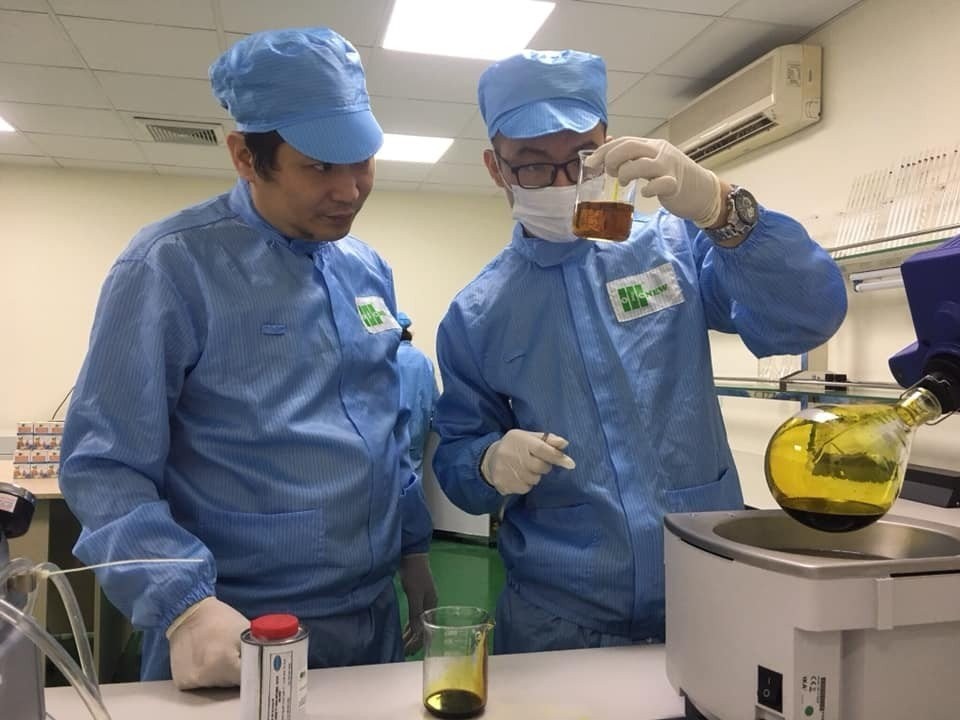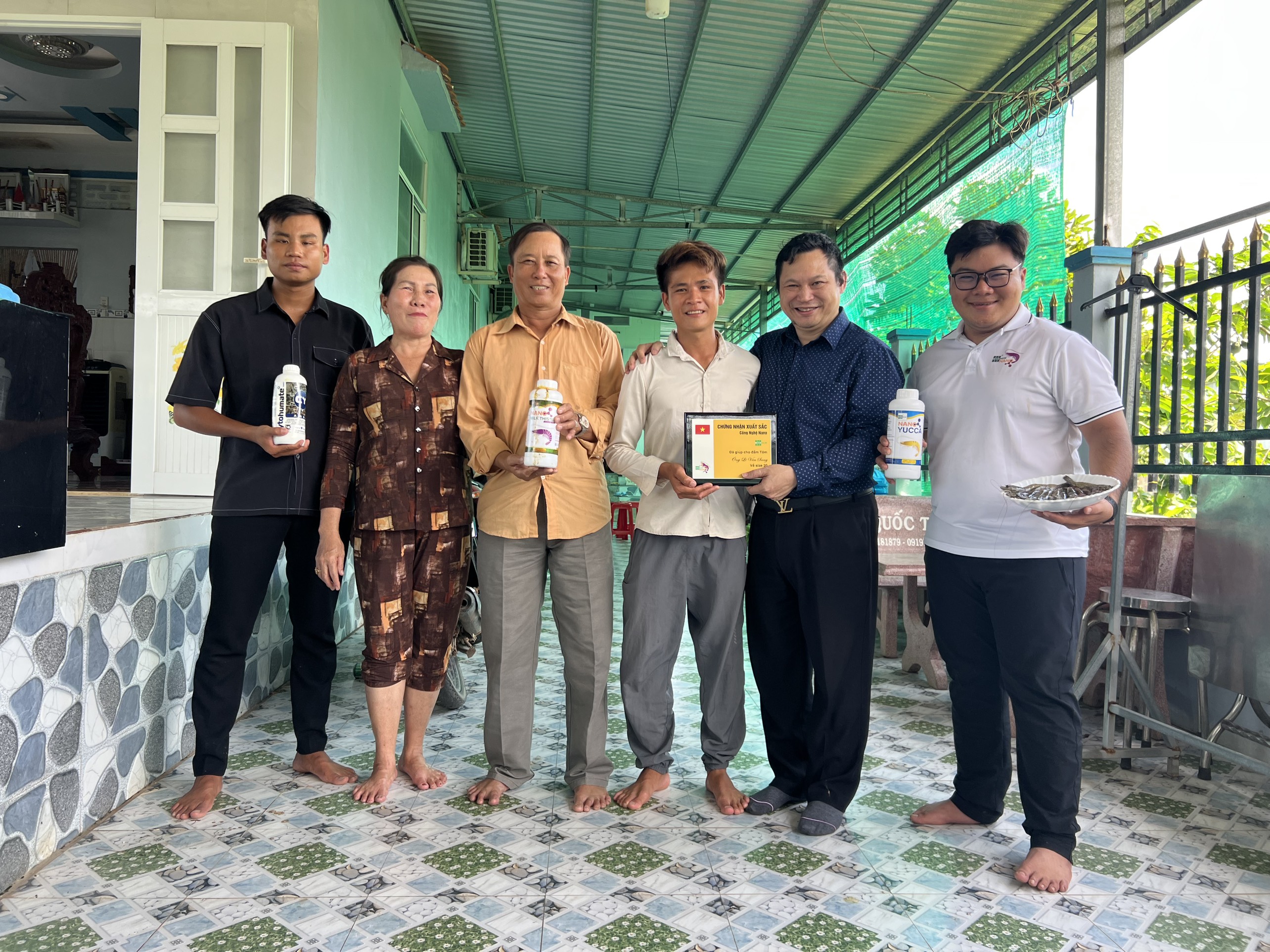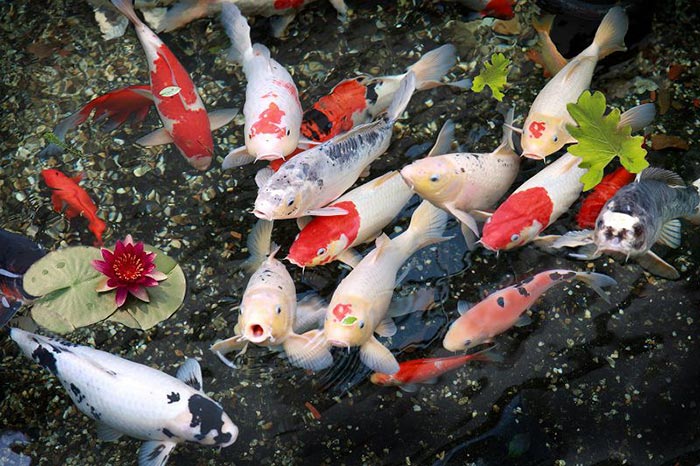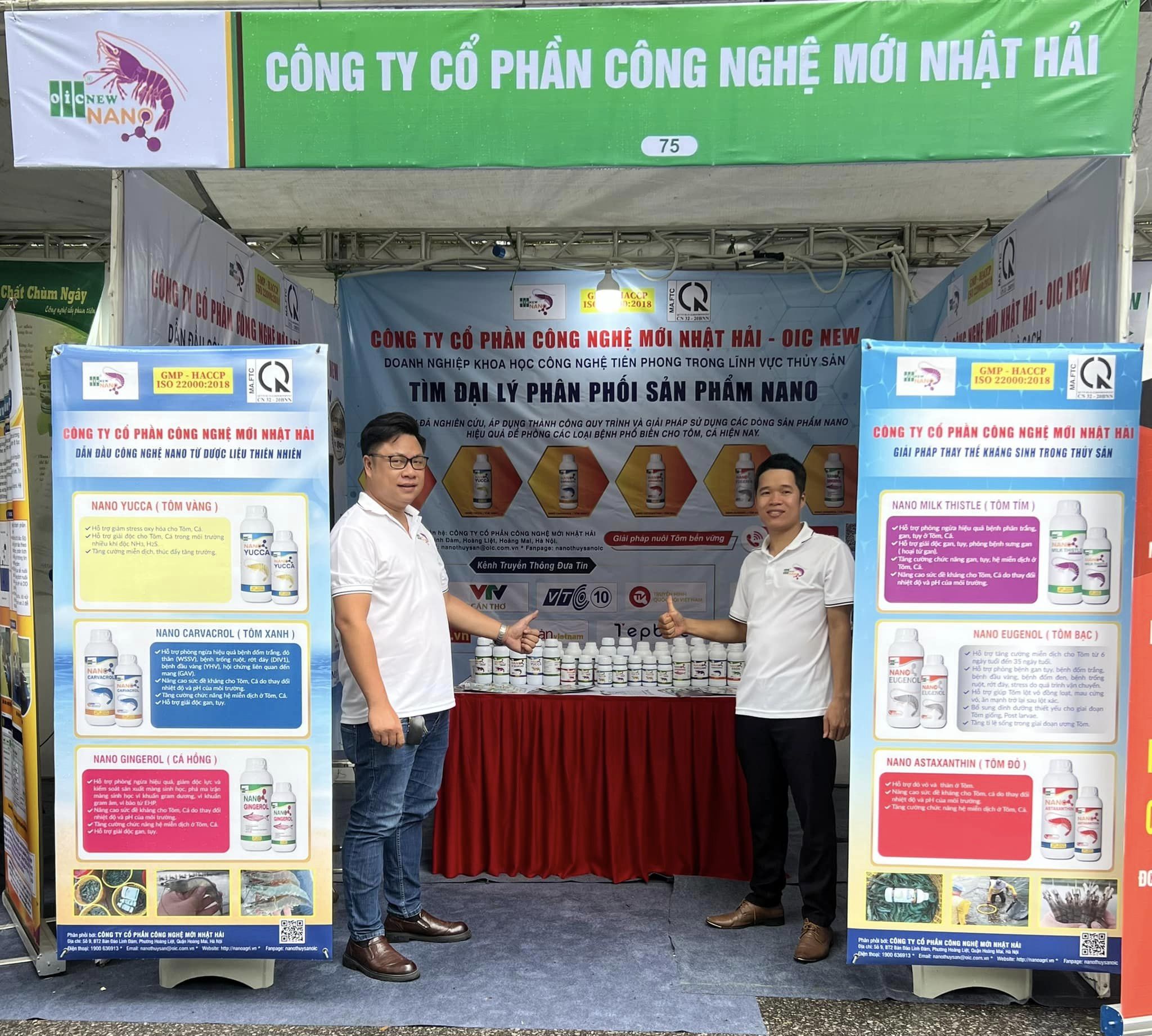One of the functions of carotenoid pigments in aquatic animal feed is to create color for animals. The carotenoid found in shrimp meat and shells is Astaxanthin.
Characteristic
Astaxanthin (C40H52O4) is a red, fat-soluble carotenoid. Is a group of pigments present on some species of algae, yeast and seafood (shrimp, salmon), giving muscles, skin, and eggs a yellow-orange or red color. An antioxidant that prevents the formation of hydrogen atoms from unsaturated fatty acids.

o produce Astaxanthin, it can be obtained from natural or synthetic sources. Researchers have proven that Astaxanthin is not a hormone, so it does not harm the reproductive ability of fish and shrimp, and it is a food-safe substance. In 1984, Astaxanthin appeared on the market and gradually replaced the pigment Cantaxathin.
Astaxanthin role in shrimp farming
Astaxanthin is considered the main colorant in the shells and internal organs of crustaceans, accounting for 86 – 98% of the total Carotenoid content and has been shown to play a role in creating attractive colors of shrimp when processed. Tests showed that when added to shrimp feed with the same content of 100 ppm, including Astaxanthin, Canthaxanthin and Astaxanthin-Canthaxanthin mixture. As a result, the Astaxanthin-supplemented diet allowed Carotenoid accumulation in the peel to be 128% higher than Canthaxanthin and 135% higher than the Astaxanthin-Canthaxanthin mixture.
For shrimp species raised for export such as today vannamei and black tiger shrimp , their market value depends greatly on body color, and shrimp cannot synthesize Astaxanthin on their own; Therefore, during the farming process, people must add a small amount of Astaxanthin to the food, to create the color preferred by consumers.
Astaxanthin deficiency in the diet of black tiger shrimp is considered to be the cause of “Blue Syndrome”. Sick shrimp will have a pale yellow color when cooked, not the natural bright red color. A study has shown that when supplementing Astaxanthin with 50 ppm to shrimp with “Blue Syndrome” after 4 weeks, the shrimp returned to their normal color. Analysis of tissue from the experimental groups confirmed that with sick shrimp supplemented with Astaxanthin, Carotenoid content increased by 318%; The remaining group did not supplement Astaxanthin and only used commercial feed, the increase in Carotenoids was only 14% and still had a “blue” color.
The required pigment content can be directly related to the similarity of the Carotenoids. Therefore, both Astaxanthin and Beta-Carotene are recommended to be included in the diet of oculectomized shrimp broodstock. Because cutting the eyes of shrimp broodstock affects most of the biochemical reactions related to the metabolism of carotenoids and can block the biological activities of retinoids (vitamin A derivatives), Retinoids are believed to activate endocrine mechanisms necessary for embryonic maturation.
Astaxanthin also plays a role in improving the survival rate and growth of shrimp larvae. Supplementing Astaxanthin with an amount of 100 ppm will increase the survival rate of shrimp larvae to 91% after 4 – 8 weeks. Supplementing 2% of Carotenoids source with chili powder with fresh food also helps significantly improve the survival rate of Zoea 2 larvae. Supplementing Astaxanthin at 50 mg/kg of food helps increase egg production in black tiger shrimp. With 150 ppm Astaxanthin for broodstock, significantly improve Nauplii quality and Zoea survival rate.
Astaxanthin is also a strong antioxidant, helping to protect the nutritional reserves of broodstock and developing embryos from oxidation. It also plays a role in activities such as storing pigment in embryos and larvae for the development of pigment cells, eye spots and is a precursor of Vitamin A. Astaxanthin also promotes shrimp reproduction, increases stress resistance, increases immunity.
In order for shrimp raised in intensive farming conditions to achieve good color, 50 ppm Astaxanthin needs to be added to shrimp food throughout the farming period.
Source: Vietnam Seafood







